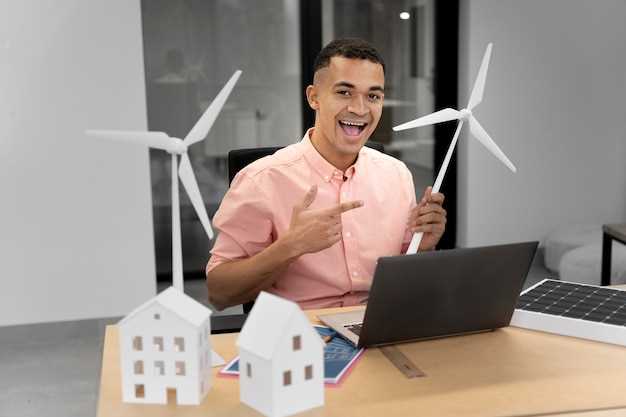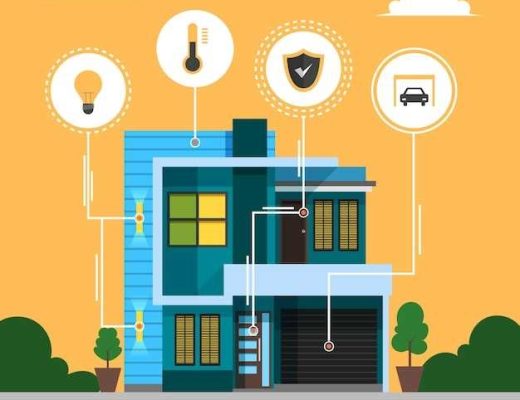
In today’s rapidly evolving world, optimizing the performance of your property has become more crucial than ever. As environmental concerns continue to gain momentum, finding innovative ways to enhance the energy efficiency of your building has become a top priority. By implementing smart strategies and adopting cutting-edge technologies, you can significantly reduce energy consumption, lower operational costs, and contribute to a sustainable future.
When it comes to maximizing energy efficiency, it’s essential to stay ahead of the curve. This article delves into a comprehensive range of expert insights and effective approaches that can revolutionize the way you manage your building’s energy consumption. From simple yet impactful changes to advanced systems and techniques, we explore a plethora of options that cater to various budgets, building types, and sustainability goals.
Discover how small adjustments in your building’s infrastructure and operations can yield significant results. Uncover the power of harnessing natural resources, such as sunlight and wind, to reduce your reliance on traditional energy sources. Explore the potential of state-of-the-art technologies, including smart meters, automated systems, and energy-efficient appliances, to optimize energy consumption without compromising comfort or functionality.
Moreover, this article delves into the importance of educating and engaging occupants in energy-saving practices. By fostering a culture of sustainability and empowering individuals to make conscious choices, you can create a collective impact that goes beyond the boundaries of your building. Learn how to implement effective communication strategies, incentivize energy-saving behaviors, and establish feedback mechanisms to ensure long-term success in your energy efficiency endeavors.
Conduct an Energy Audit to Identify Areas of Improvement
Assessing the energy consumption and efficiency of your building is a crucial step in identifying areas that can be improved upon. By conducting an energy audit, you can gain valuable insights into the energy usage patterns and potential areas for optimization.
Start by examining the various systems and components within your building that contribute to energy consumption. This includes HVAC systems, lighting fixtures, insulation, windows, and appliances. Evaluate their performance and efficiency levels to determine if any upgrades or replacements are necessary.
During the audit, consider factors such as insulation quality, air leaks, and outdated equipment that may be causing energy wastage. Look for opportunities to implement energy-saving measures, such as installing programmable thermostats, LED lighting, or energy-efficient appliances.
Additionally, analyze the building’s energy usage data to identify any patterns or anomalies. This can help pinpoint specific areas or times of day when energy consumption is particularly high, allowing you to develop targeted strategies for improvement.
Engage with energy professionals or consultants who specialize in conducting energy audits. They can provide expert guidance and utilize advanced tools to assess your building’s energy performance comprehensively. Their expertise can help you identify potential areas of improvement that may have been overlooked.
By conducting an energy audit, you can gain a comprehensive understanding of your building’s energy usage and identify specific areas where efficiency can be enhanced. This process will enable you to develop a tailored plan to optimize energy consumption and reduce costs in the long run.
Upgrade to Energy-Efficient Lighting Systems
Optimizing the lighting systems in your building can significantly contribute to reducing energy consumption and improving sustainability. By embracing the latest advancements in energy-efficient lighting technologies, you can enhance the overall efficiency and performance of your lighting setup.
1. Embrace LED Lighting
One of the most effective ways to upgrade your lighting system is by transitioning to LED (Light Emitting Diode) lights. LED lights are known for their energy efficiency, long lifespan, and low maintenance requirements. They consume significantly less energy compared to traditional incandescent or fluorescent bulbs, making them an ideal choice for both residential and commercial buildings.
2. Implement Lighting Controls
Integrating lighting controls into your building’s lighting system can further enhance energy efficiency. By utilizing occupancy sensors, timers, and dimmers, you can ensure that lights are only activated when needed and adjust their brightness according to the specific requirements of each area. This not only reduces energy waste but also extends the lifespan of the lighting fixtures.
Additionally, consider utilizing natural daylight to its fullest potential. By strategically placing windows, skylights, or light tubes, you can maximize the use of natural light during the day, reducing the need for artificial lighting and further minimizing energy consumption.
Upgrading to energy-efficient lighting systems not only helps in reducing energy costs but also contributes to a greener and more sustainable environment. By implementing these strategies, you can make a significant impact on your building’s energy efficiency and overall carbon footprint.
Improve Insulation to Reduce Heat Loss
Enhancing the effectiveness of insulation in your building is a crucial step towards reducing heat loss and improving energy efficiency. By implementing proper insulation measures, you can create a more comfortable indoor environment while minimizing the need for excessive heating and cooling. In this section, we will explore various strategies and techniques to improve insulation and prevent heat loss in your building.
Identify and Seal Air Leaks
One of the primary causes of heat loss in buildings is air leakage. Air leaks can occur through gaps and cracks in windows, doors, walls, and ceilings, allowing warm air to escape and cold air to enter. To improve insulation, it is essential to identify and seal these air leaks effectively. Conduct a thorough inspection of your building, paying close attention to areas prone to air leakage. Use weatherstripping, caulking, and sealants to seal any gaps or cracks, ensuring a tight seal and preventing heat loss.
Upgrade Insulation Materials
Another effective strategy to enhance insulation and reduce heat loss is to upgrade the insulation materials used in your building. Consider replacing outdated or inadequate insulation with more efficient options such as fiberglass, cellulose, or spray foam insulation. These materials provide better thermal resistance, minimizing heat transfer and improving energy efficiency. Additionally, ensure proper installation of insulation to maximize its effectiveness and prevent any gaps or voids that could compromise its performance.
| Insulation Type | Advantages |
|---|---|
| Fiberglass | Excellent thermal resistance, cost-effective, easy installation |
| Cellulose | Environmentally friendly, good sound insulation, effective in tight spaces |
| Spray Foam | Superior air sealing, high R-value, moisture resistance |
By upgrading insulation materials, you can significantly reduce heat loss, enhance energy efficiency, and create a more sustainable and comfortable building environment.
Optimize HVAC Systems for Energy Efficiency
In this section, we will explore various strategies and techniques to maximize the energy efficiency of your HVAC (Heating, Ventilation, and Air Conditioning) systems. By implementing these measures, you can significantly reduce energy consumption and lower utility costs without compromising comfort.
1. Enhance Insulation
One of the key factors in optimizing HVAC energy efficiency is ensuring proper insulation throughout the building. Insulation helps to minimize heat transfer, keeping the indoor temperature stable and reducing the workload on the HVAC system. Consider using high-quality insulation materials in walls, ceilings, and floors to prevent heat loss or gain.
2. Implement Zoning Systems
Zoning systems allow you to divide your building into different areas or zones, each with its own thermostat control. This enables you to customize the temperature settings based on occupancy and usage patterns. By only conditioning the areas that are occupied, you can avoid wasting energy on unoccupied spaces, resulting in significant energy savings.
3. Regular Maintenance and Upgrades

Regular maintenance and timely upgrades of HVAC equipment are crucial for optimal energy efficiency. Schedule routine inspections, cleanings, and tune-ups to ensure that your systems are operating at their peak performance. Additionally, consider upgrading to energy-efficient models or components, such as programmable thermostats or variable-speed drives, to further enhance energy savings.
4. Utilize Natural Ventilation
Take advantage of natural ventilation whenever possible to reduce reliance on mechanical cooling or heating. Design your building with windows that can be opened to allow fresh air circulation. Use window coverings strategically to block direct sunlight during hot periods and maximize natural light during colder months. This approach not only saves energy but also promotes a healthier indoor environment.
5. Optimize HVAC Controls
Ensure that your HVAC controls are properly calibrated and programmed to optimize energy efficiency. Utilize setback or night setback settings to reduce heating or cooling when the building is unoccupied or during non-peak hours. Implement temperature and humidity sensors to automatically adjust HVAC settings based on real-time conditions. Fine-tuning these controls can result in significant energy savings without sacrificing comfort.
- Enhance insulation to minimize heat transfer
- Implement zoning systems for customized temperature control
- Regular maintenance and upgrades for optimal performance
- Utilize natural ventilation to reduce reliance on mechanical systems
- Optimize HVAC controls for energy-efficient operation
By implementing these strategies, you can optimize your HVAC systems for energy efficiency, reducing energy consumption and operating costs while maintaining a comfortable indoor environment.
Implement Smart Building Technologies
Incorporate intelligent systems and advanced technologies into your building to optimize its performance and reduce energy consumption. By embracing smart building technologies, you can enhance the operational efficiency and sustainability of your facility.
Integrating cutting-edge solutions such as automated controls, sensor networks, and data analytics enables your building to adapt and respond intelligently to changing environmental conditions. These technologies empower your facility to make informed decisions, optimize energy usage, and improve occupant comfort.
Deploying smart building technologies allows for real-time monitoring and analysis of energy consumption patterns, enabling you to identify areas of inefficiency and implement targeted improvements. By utilizing smart meters, energy management systems, and building automation systems, you can gain valuable insights into your building’s energy usage and take proactive measures to reduce waste.
Furthermore, smart building technologies facilitate the implementation of demand response strategies, enabling your facility to participate in energy-saving programs and contribute to a more sustainable grid. By leveraging advanced controls and communication systems, your building can adjust its energy consumption during peak demand periods, reducing strain on the electrical grid and potentially earning financial incentives.
Investing in smart building technologies not only enhances energy efficiency but also improves the overall functionality and performance of your facility. By embracing these innovative solutions, you can create a more sustainable and comfortable environment for occupants while reducing operational costs and minimizing your building’s environmental footprint.
Educate and Engage Building Occupants in Energy Conservation
Creating a culture of energy conservation within a building involves more than just implementing efficient systems and technologies. It requires actively engaging and educating the building occupants on the importance of energy conservation and providing them with the knowledge and tools to make sustainable choices.
By fostering a sense of ownership and responsibility among the occupants, they can become active participants in reducing energy consumption and promoting a greener environment. This section explores various strategies to educate and engage building occupants in energy conservation.
One effective approach is to provide regular communication and education campaigns that highlight the benefits of energy conservation. This can include newsletters, emails, or bulletin boards that share energy-saving tips, success stories, and updates on the building’s energy performance. By keeping occupants informed and involved, they will feel empowered to take action and make conscious decisions to reduce their energy usage.
Another way to engage building occupants is through interactive workshops and training sessions. These sessions can cover topics such as energy-efficient practices, the use of smart technologies, and the impact of individual actions on overall energy consumption. By providing hands-on learning experiences, occupants can gain a deeper understanding of energy conservation and develop practical skills to implement in their daily routines.
In addition to education, it is crucial to create incentives and recognition programs to motivate building occupants to actively participate in energy conservation efforts. This can include rewards for achieving energy-saving goals, recognition for innovative ideas, or competitions to encourage friendly competition among occupants. By acknowledging and rewarding their efforts, occupants will feel valued and motivated to continue their energy-saving behaviors.
Furthermore, involving occupants in the decision-making process can foster a sense of ownership and commitment to energy conservation. This can be done through regular surveys or feedback sessions to gather their opinions and suggestions on energy-saving initiatives. By involving occupants in the planning and implementation of energy conservation measures, they will feel a sense of responsibility and pride in contributing to a more sustainable building.
In conclusion, educating and engaging building occupants in energy conservation is essential for enhancing energy efficiency. By providing information, training, incentives, and involving them in decision-making, occupants can become active participants in reducing energy consumption and creating a greener building environment.



